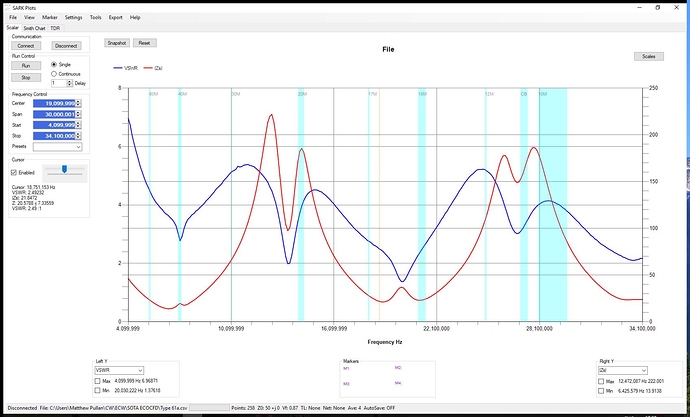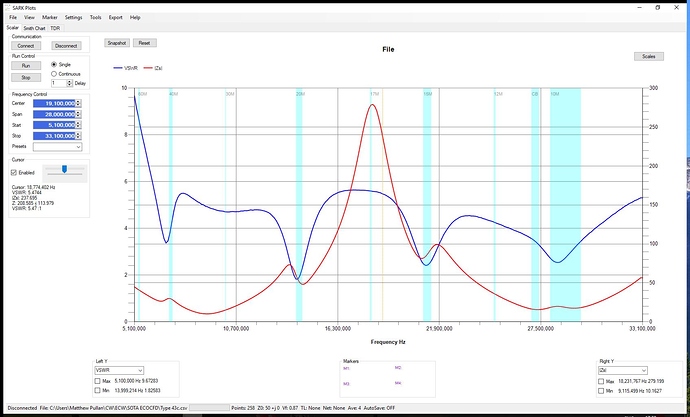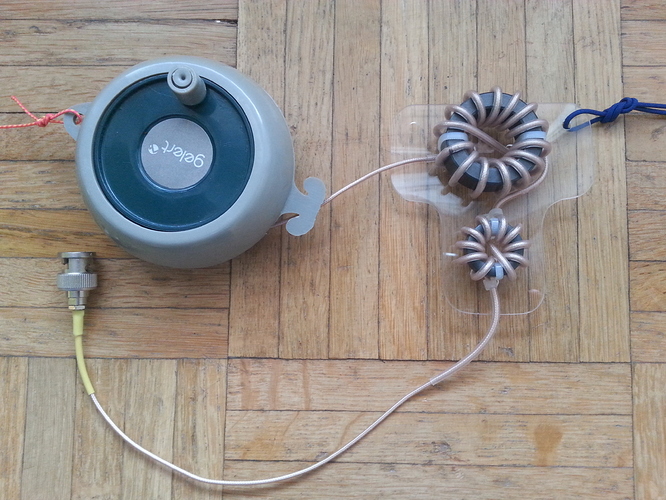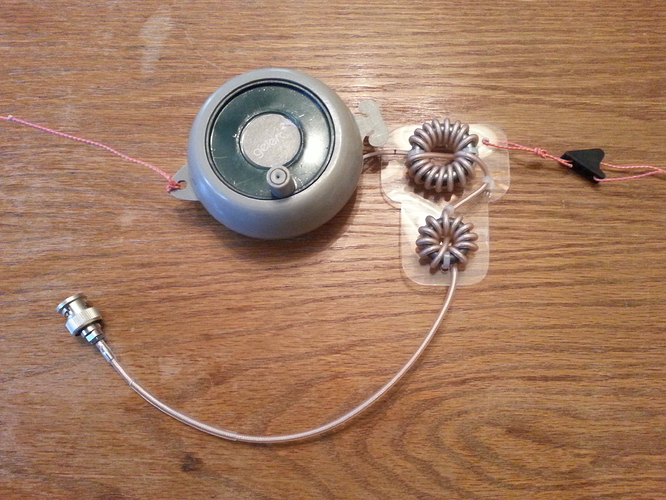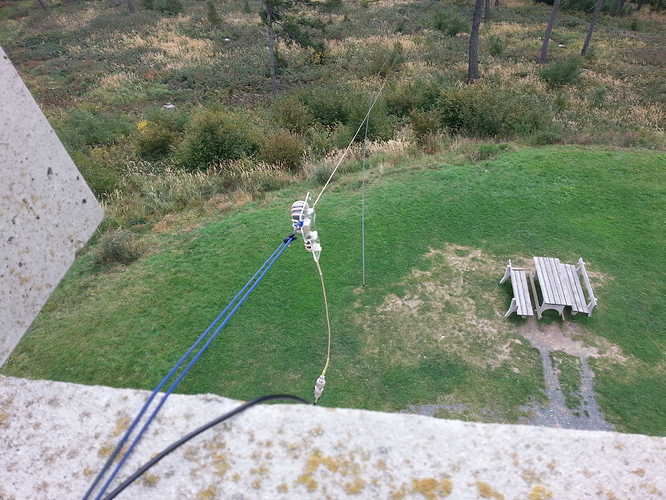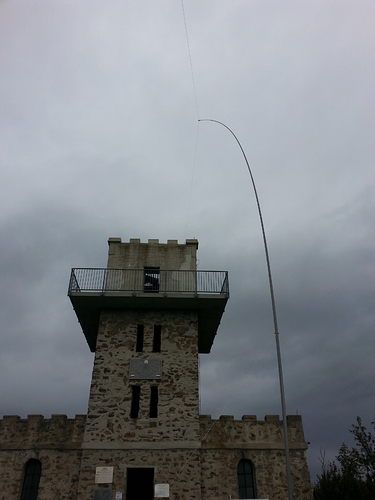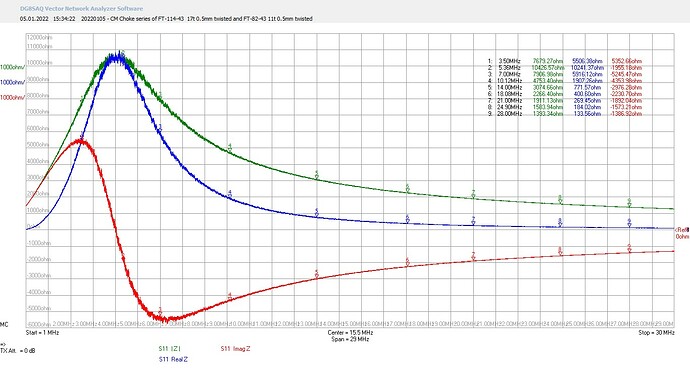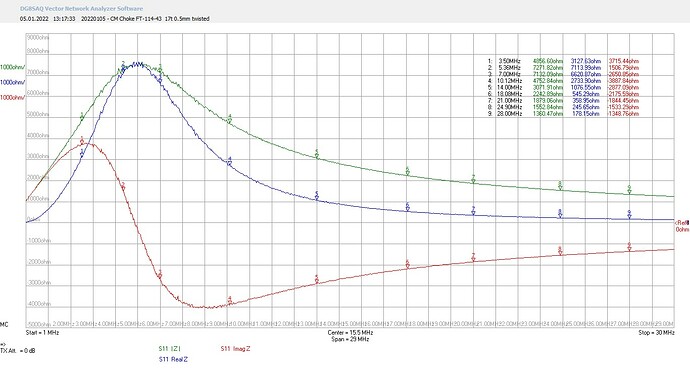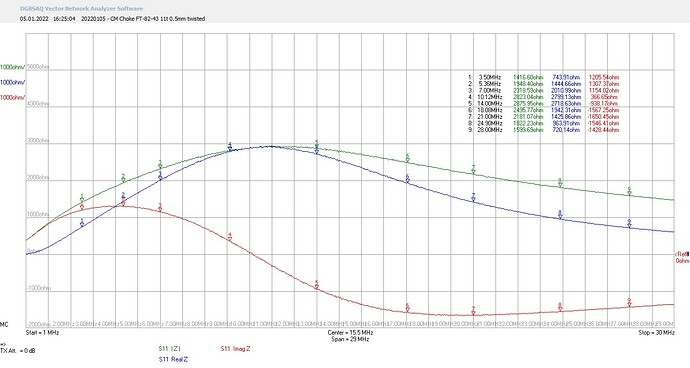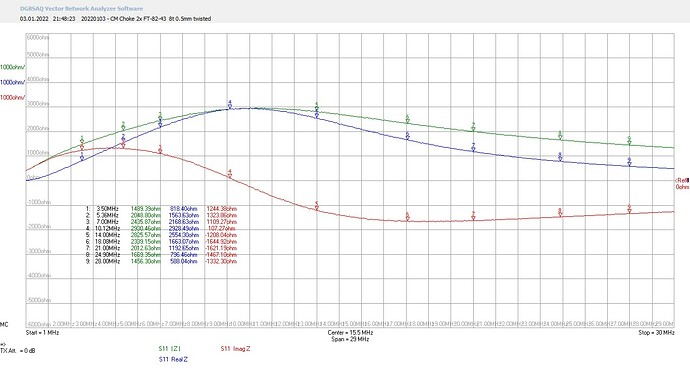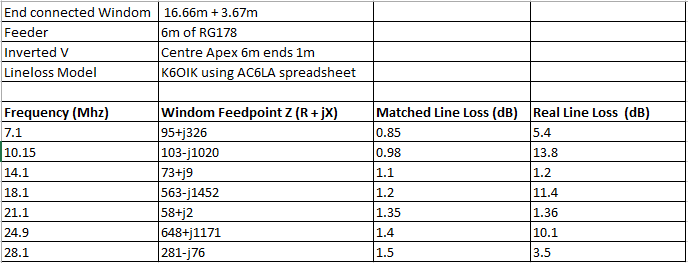There seems to be a lot of interest in antennas that can be used with an internal ATU, such as that found in the KX3/2/1, so I thought I would share a rather clever design that was given to me by G3UNA, who in turn got it from M0RZF:
http://www.m0rzf.co.uk/styled/
It is generally called an End Connected Windom or ECOCFD. The name says ‘end connected’ and not ‘end fed’ for a good reason. It offers almost all the advantages of an EFHW antenna (resonance and no long coax feeder to carry), whilst cleverly utilising common mode currents to feed the antenna as one would a normal off-centre fed dipole, yielding a much more manageable feed-point impedance in the range of a few hundred ohms, rather than several thousand. Below is a basic diagram of an antenna made for 40 - 6m:
I have learnt quite a bit in the course of building quite a few of these antennas. Firstly, getting sufficient impedance from the current balun is of paramount importance. Although there is some leeway with the choice of ferrite material, at least one ferrite should be type 43 if the antenna is for 80m and above. Type 31 would be needed for 160m. Two ferrites give a big increase in impedance, and having them different sizes helps prevent any capacitive coupling between the cores (so I’m told). Below is a plot taken from a version that used two type 61 ferrites, an FT 114-61 and an FT 82-61:
What interests me here is that F-res at 40m is much higher than it should be given the readings for F-res at 20m and above. Compare that with the plot I made for exactly the same antenna, but with the FT 114-61 swapped for an FT 140-43:
Here we see that the impedance plot is almost completely the opposite of the first version and looks much more like it should do. I should point out that the antenna would probably work fine with just one FT 140-43, and maybe even just one FT 114-43; that is for other people to experiment with. The one other point to bear in mind is that RG178 coax, just like RG316, has a rather thin PTFE sheath. This sheath got damaged on some of the first versions I made, especially where it was wound round the toroids. So, in later versions I began to protect the section of coax that was wound onto the toroids with some clear heatshrink tubing. Applying such a long length of heatshrink takes a lot of careful work from one end to the other, so as to avoid air bubbles. The finished article can be wound very conveniently onto a camping washing line reel:
As can be seen, I mount the ferrites on a piece of 2mm acrylic. It is best to use some adhesive lined heatshrink for the feedpoint connection between the PVC wire and the centre conductor of the RG178. There are only 7 strands of very thin wire in that centre conductor, and yes, they have snapped on me in the field. The finished antenna weighs about 230g, but this could be made considerably lighter by someone with the time and inclination. It tunes up (with a KX3) and works acceptably well on all bands from 40m to 6m, I have had good DX contacts from this antenna on every band it can tune. Below is a WSPR plot using 1 watt TX power on 40m from the antenna (same design) that I use as my main station antenna:
Of course, some bands will work better than others. You can, of course, make a perfectly functional, if somewhat heavier, antenna with just RG174. SOTABEAMS sells RG178:
https://www.sotabeams.co.uk/coaxial-cable-rg178-per-metre/
I use this antenna all the time with my KX3. I only swap to a Fuchskreis when there is likely to be a lot of BC and commercial interference, as the Fuchskreis give excellent out of band rejection. I’ve posted it before, but here is my log from the 03/01/2018:
This antenna works!
de OE6FEG / M0FEU
Matt

